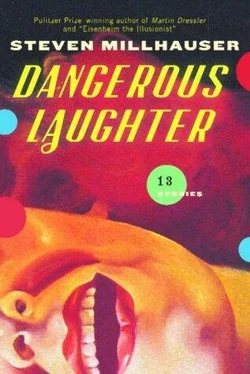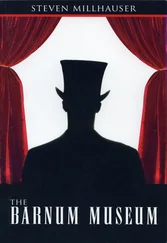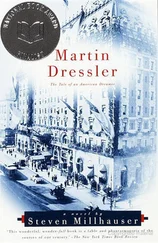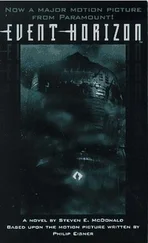What are we to make of these striking effects, which seem to anticipate, in a limited way, the illusions of motion perfected by Edison and the Lumière brothers in the mid-1890s? Such motions were observed in no other of the more than three hundred Verisimilist paintings, and they inspired a number of curious explanations. The “trick” paintings, as they came to be called, were said to depend on carefully planned lighting arrangements, as in the old Diorama invented by Daguerre and in more recent magic-lantern shows, where a wagon might seem to move across a landscape (though its wheels did not turn). What this explanation failed to explain was where the lights were concealed, why no one mentioned any change in light, and how, precisely, the complex motions were produced. Another theory claimed that behind the paintings lay concealed systems of springs and gears, which caused parts of the picture to move. Such reasoning might explain how a mechanical fly, attached to the surface of a painting, could be made to move from one location to another, but we have the testimony of several viewers that the fly in Crane’s still life was smooth to the touch, and in any case the clockwork theory cannot explain phenomena such as the falling and retreating waves or the suddenly appearing ghostly form. It is true that Daguerre, in a late version of his Diorama, created an illusion of moving water by the turning of a piece of silver lace on a wheel, but Daguerre’s effects were created in a darkened theater, with a long distance between seated viewers and a painted semitransparent screen measuring some seventy by fifty feet, and cannot be compared with a small canvas hanging six inches from a viewer’s eyes in a well-lit room.
A more compelling theory for the historian of the cinema is that Harlan Crane might have been making use of a concealed magic lantern (or a projector of his own invention) adapted to display a swift series of sequential drawings, each one illuminated for an instant and then abolished before being replaced by the next. Unfortunately there is no evidence whatever of beams of light, no one saw a telltale flicker, and we have no way of knowing whether the motions repeated themselves in exactly the same way each time.
The entire issue is further obscured by Crane’s own bizarre claim to a reporter, at the time of the exhibition, that he had invented what he called animate paint — a paint chemically treated in such a way that individual particles were capable of small motions. This claim — the first sign of the future showman — led to a number of experiments performed by chemists hired by the Society for the Advancement of the Arts, where at the end of the year an exhibition of third-rate paintings took place. As visitors passed from picture to picture, the oils suddenly began to drip down onto the frames, leaving behind melting avenues, wobbly violinists, and dissolving plums. The grotesque story does not end here. In 1875 a manufacturer of children’s toys placed on the market a product called Animate Paint, which consisted of a flat wooden box containing a set of brightly colored metal tubes, half a dozen slender brushes, a manual of instruction, and twenty-five sheets of specially prepared paper. On the advice of a friend, Crane filed suit; the case was decided against him, but the product was withdrawn after the parents of children with Animate Paint sets discovered that a simple stroke of chrome-yellow or crimson lake suddenly took on a life of its own, streaking across the page and dripping brightly onto eiderdown comforters, English-weave rugs, and polished mahogany tables.
An immediate result of the controversy surrounding Crane’s four paintings was his expulsion from the Verisimilist group, who claimed that his optical experiments detracted from the aim of the movement: to reveal the world with ultra-photographic precision. We may be forgiven for wondering whether the expulsion served a more practical purpose, namely, to remove from the group a member who was receiving far too much attention. In any case, it may be argued that Crane’s four paintings, far from betraying the aim of the Verisimilists, carried that aim to its logical conclusion. For if the intention of verisimilism was to go beyond the photograph in its attempt to “reveal” the world, isn’t the leap into motion a further step in the same direction? The conventional Verisimilist wave distorts the real wave by its lack of motion; Crane’s breaking wave is the true Verisimilist wave, released from the falsifying rigidity of paint.
Little is known of Crane’s life during the three years following the Exhibition of 1874. We know from W. C. Curtis, the one Verisimilist who remained a friend, that Crane shut himself up all day in his studio, with its glimpse of the distant roof of the Fulton Fish Market and a thicket of masts on the East River, and refused to show his work to anyone. Once, stopping by in the evening, Curtis noticed an empty easel and several large canvases turned against the wall. “It struck me forcibly,” Curtis recorded in his diary, “that I was not permitted to witness his struggles.” Exactly what those struggles were, we have no way of knowing. We do know that a diminishing number of his undistinguished woodcut engravings continued to appear in Harper’s Weekly, as well as in Appleton’s Journal and several other publications, and that for a time he earned a small income by tinting portrait photographs. “On a long table at one side of the studio,” Curtis noted on one occasion, “I observed a wet cell, a number of beakers, several tubes of paint, and two vessels filled with powders.” It remains unclear what kinds of experiment Crane was conducting, although the theme of chemical experimentation raises the old question of paint with unusual properties.
In 1875 or 1876 he began to frequent the studio of Robert Allen Lowe, a leading member of a loose-knit group of painters who called themselves Transgressives and welcomed Crane as an offender of Verisimilist pieties. Crane began taking his evening meals at the Black Rose, an alehouse patronized by members of the group. According to Lowe, in a letter to Samuel Hope (a painter of still lifes who later joined the Transgressives), Crane ate quickly, without seeming to notice what was on his plate, spoke very little, and smoked a big-bowled meerschaum pipe with a richly stained rim, a cherrywood stem, and a black rubber bit as he tilted back precariously in his chair and hooked one foot around a table leg. He wore a soft porkpie hat far back on his head and followed the conversation intently behind thick clouds of smoke.
The Transgressive movement began with a handful of disaffected Verisimilists who felt that the realist program of verisimilism did not go far enough. Led by Lowe, who was known for his spectacularly detailed paintings of dead pheasants, bunches of asparagus, and gleaming magnifying glasses lying on top of newspapers with suddenly magnified print, the Transgressives argued that Verisimilist painting was hampered by its craven obedience to the picture frame, which did nothing but draw attention to the artifice of the painted world it enclosed. Instead of calling for the abolishment of the frame, in the manner of trompe l’oeil art, Lowe insisted that the frame be treated as a transition or “threshold” between the painting proper and the world outside the painting. Thus in a work of 1875, Three Pears, a meticulous still life showing three green pears on a wooden table sharply lit by sunlight streaming through a window, the long shadows of the pears stretch across the tabletop and onto the vine-carved picture frame itself. This modest painting led to an outburst of violations and disruptions by Lowe and other members of the group, and their work made its way into the Brewery Show of 1877.
The Transgressive Exhibition — better known as the Brewery Show, since the paintings were housed in an abandoned brewery on Twelfth Avenue near the meatpacking district — received a good deal of unfavorable critical attention, although it proved quite popular with the general public, who were attracted by the novelty and playfulness of the paintings. One well-known work, The Window, showed a life-size casement window in a country house. Real ivy grew on the picture frame. The Writing Desk, by Robert Allen Lowe, showed part of a rolltop desk in close-up detail: two rows of pigeonholes and a small, partly open door with a wooden knob. In the pigeonholes one saw carefully painted envelopes, a large brass key, folded letters, a pince-nez, and a coil of string, part of which hung carelessly down over the frame. Viewers discovered that one of the pigeonholes was a real space containing a real envelope addressed to Robert Allen Lowe, while the small door, composed of actual wood, protruded from the picture surface and opened to reveal a stoneware ink bottle from which a quill pen emerged at a slant. Several people reached for the string, which proved to be a painted image. Grapes, a large canvas by Samuel Hope, showed an exquisitely painted bunch of purple grapes from which real grapes emerged to rest in a silver bowl on a table beneath the painting. After the first day, a number of paintings had to be roped off, to prevent the public from pawing them to pieces.
Читать дальше












